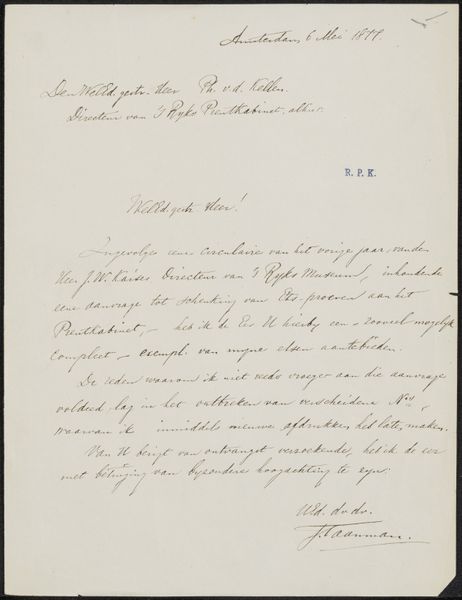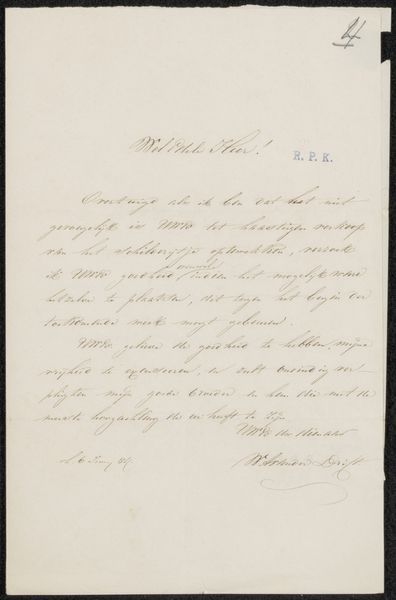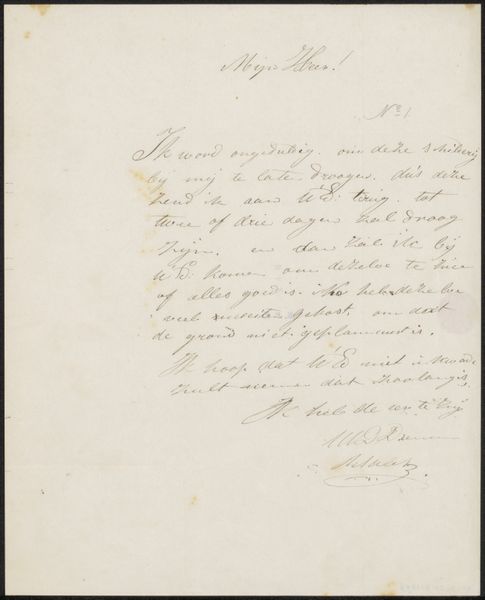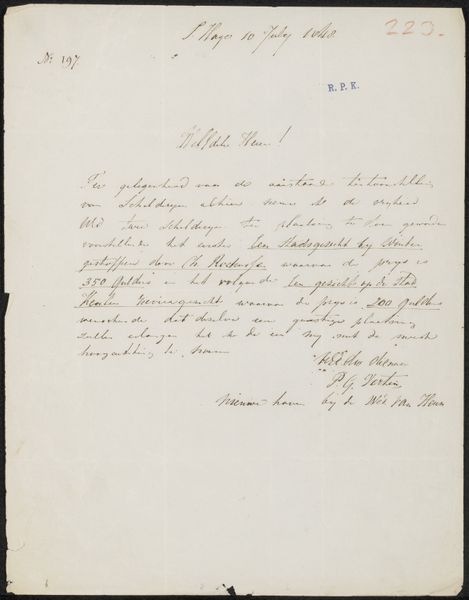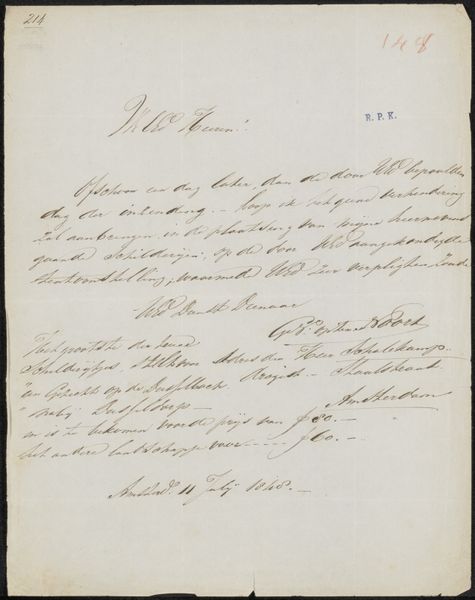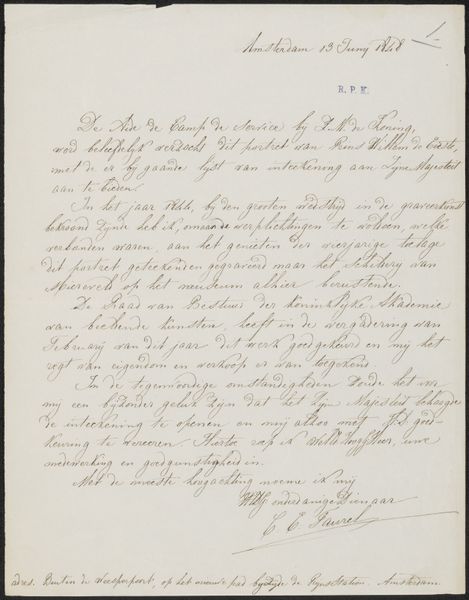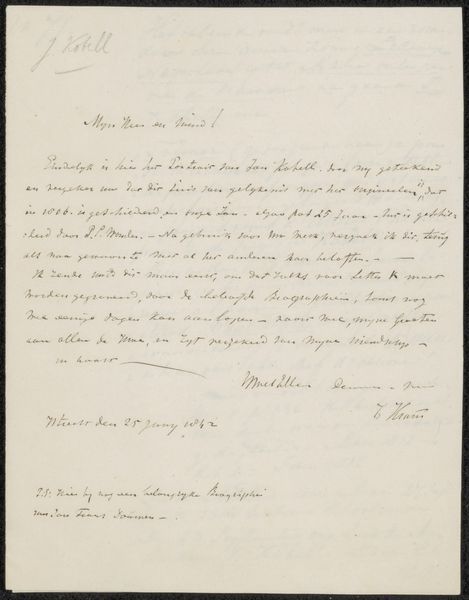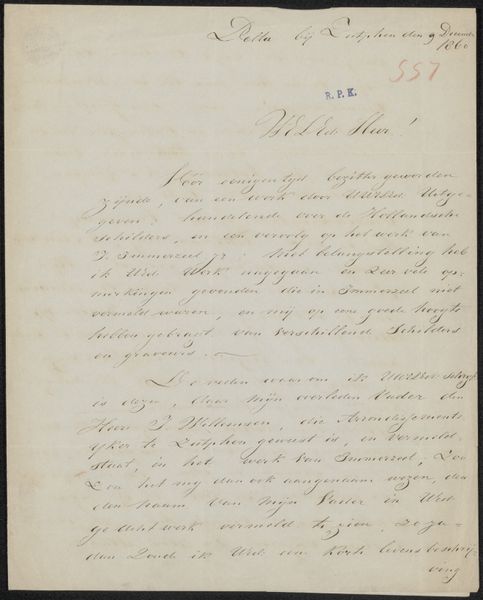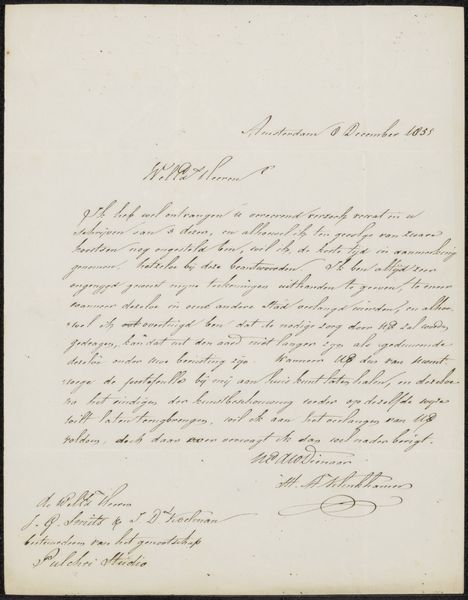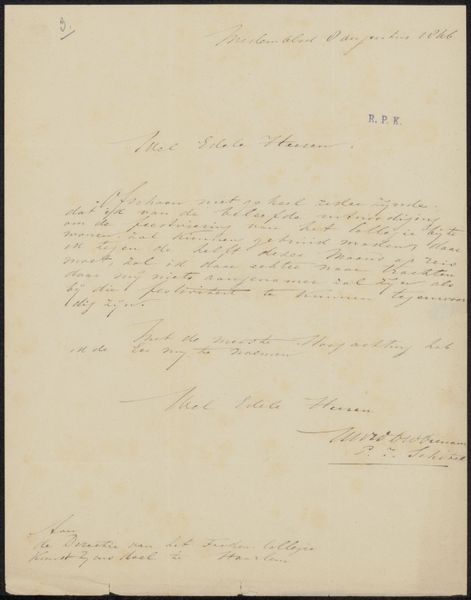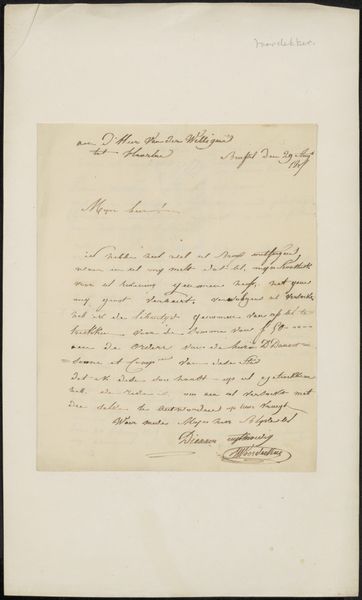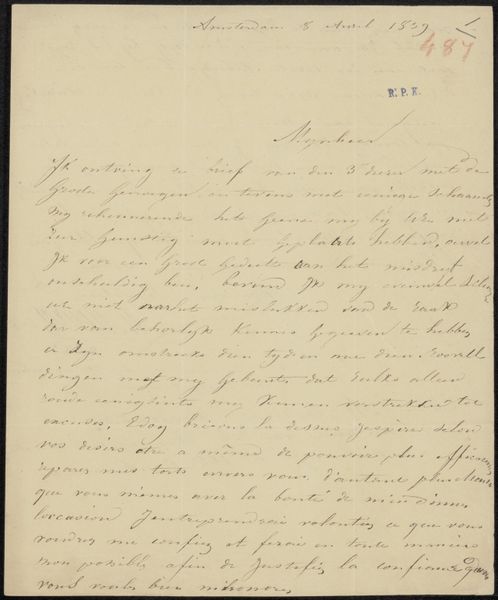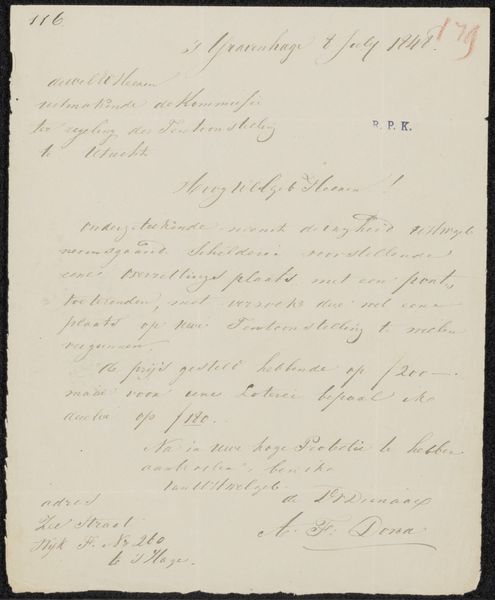
drawing, paper, ink, pen
#
portrait
#
drawing
#
paper
#
ink
#
romanticism
#
pen
Copyright: Rijks Museum: Open Domain
Editor: This is "Brief aan Jan Weissenbruch," possibly from 1845, a pen and ink drawing on paper by Alexander Oltmans. It seems to be a letter, and the script is elegant but difficult to read. It evokes a feeling of distance, perhaps due to the formality of the handwriting. What social context might illuminate this piece? Curator: It's fascinating how you immediately pick up on that sense of distance. A letter, especially in this era, becomes a powerful object when thinking about social interactions. How would you imagine the socio-economic landscape of artistic exchange? Was it inclusive? Consider what this letter represents: access, privilege, potential patronage. Who would be literate? Editor: Right, literacy wasn’t universal, so receiving such a letter would automatically place Jan Weissenbruch in a particular social stratum. Also, the handwriting is so ornate. Was that a status symbol? Curator: Precisely. The Romantic era often emphasized individual expression, yet that expression was filtered through rigid societal structures. Calligraphy signified education and refinement, characteristics deeply intertwined with class. What do you think of when you notice the author is writing a letter about money to someone? Editor: I hadn’t thought of that, but that brings into focus issues around the commodification of art and the artist's financial dependence on patrons or institutions. Did race or gender intersect with how these communications or transactions played out? Curator: Absolutely, the art world of the 19th century was dominated by white men; gender and racial biases profoundly affected who had access to art education, exhibition opportunities, and financial support. Thinking about Oltmans, what opportunities were available to non-white identifying artists or female artists at that time? Editor: I see. Examining this letter isn't just about its aesthetic value, but how it highlights power dynamics in the art world and the inherent biases present even in seemingly simple communication. Curator: Exactly. It is by analyzing this web of power and influence that art like this can contribute to modern dialogues.
Comments
No comments
Be the first to comment and join the conversation on the ultimate creative platform.
